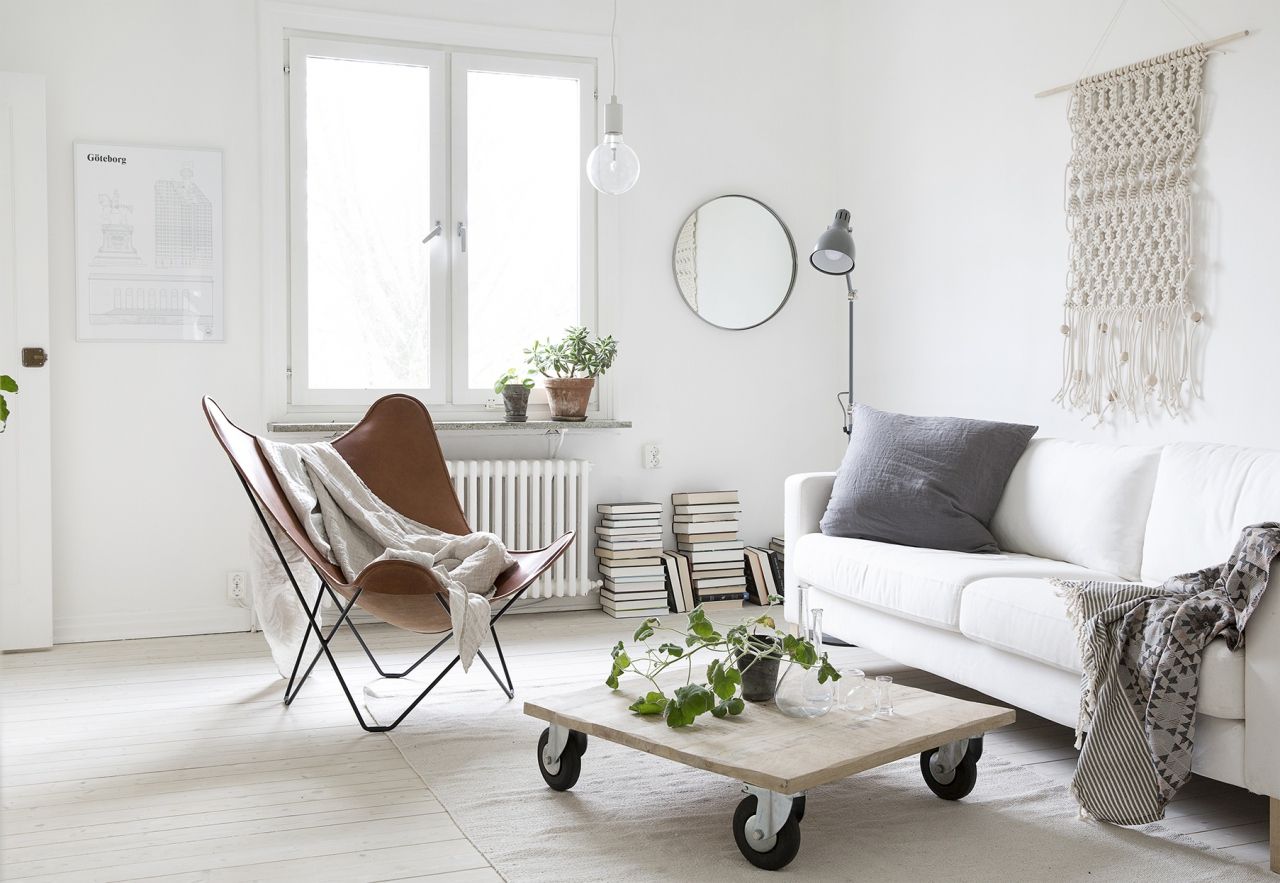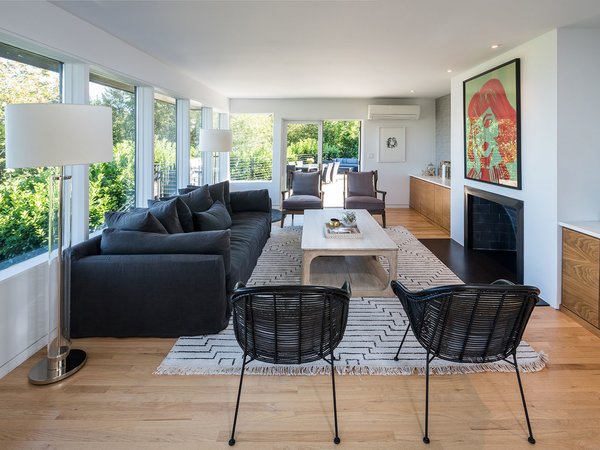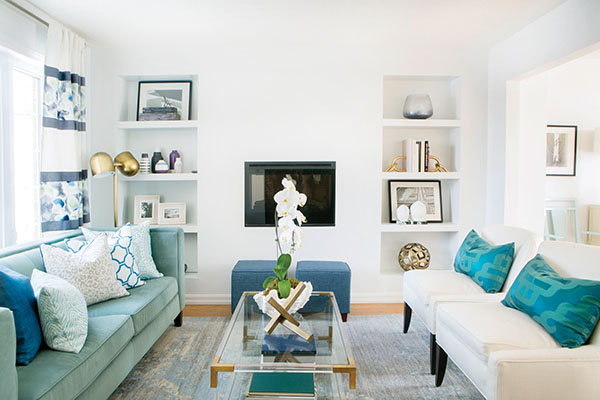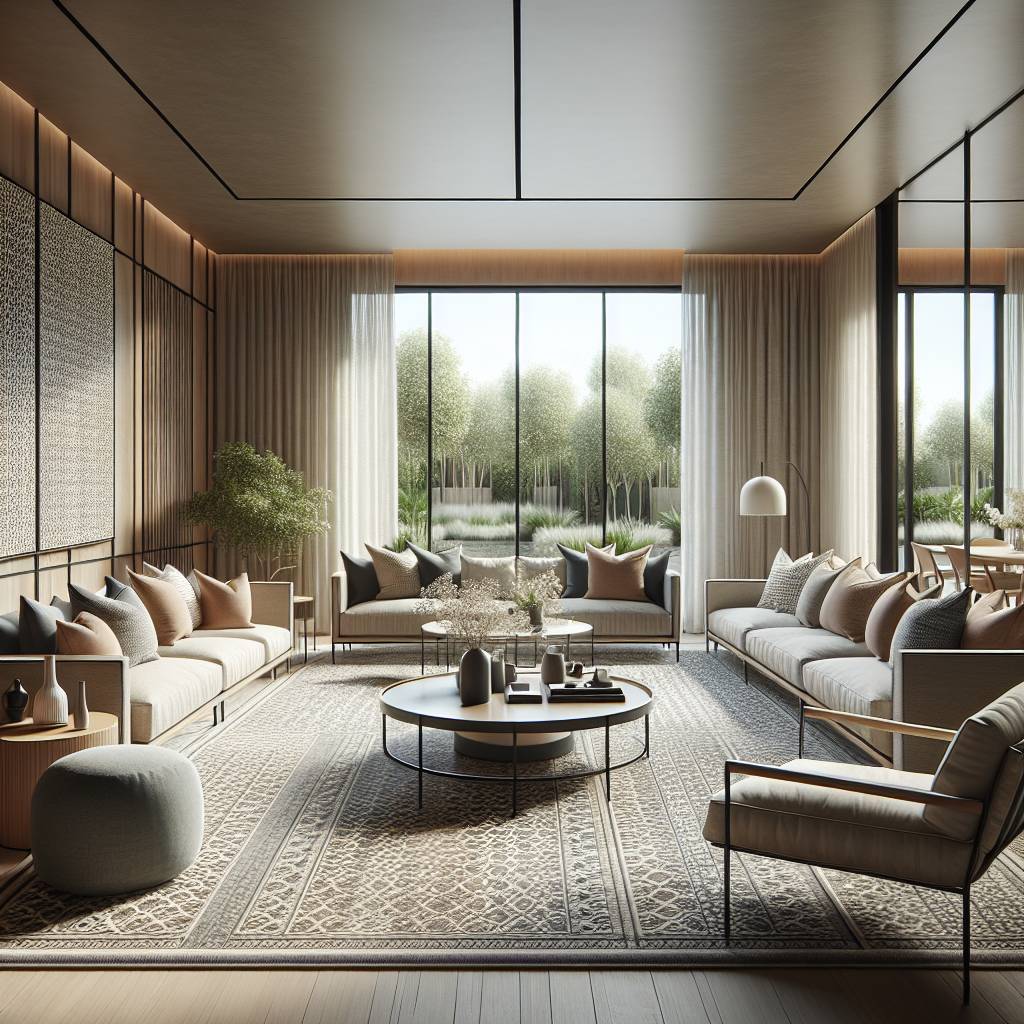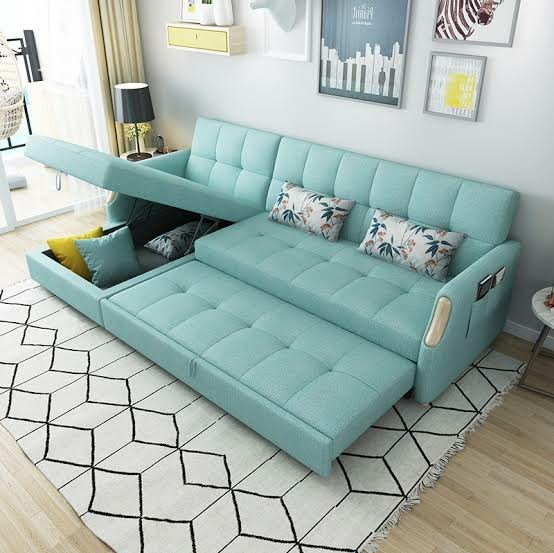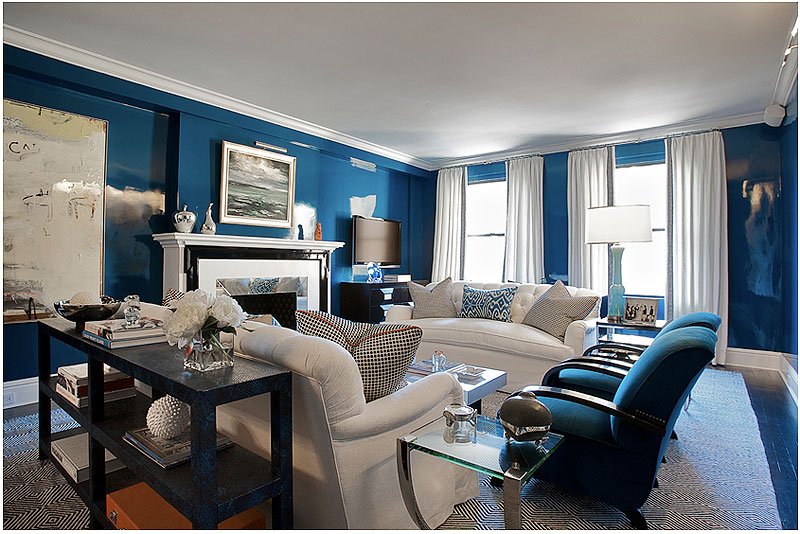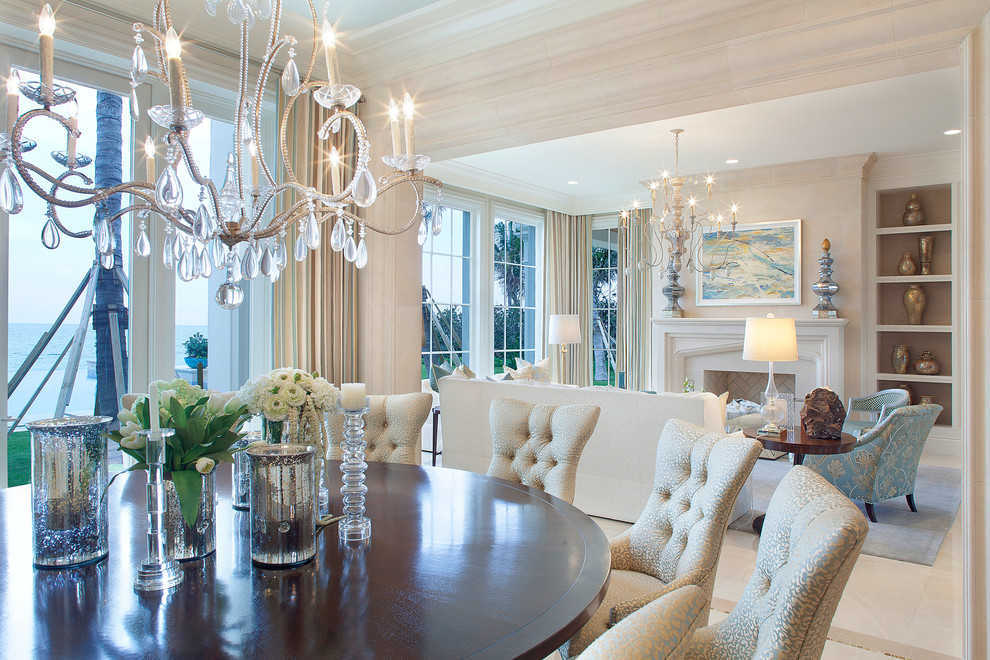Ever wondered how a sleek, uncluttered space can amplify the comfort of your home? That’s the magic minimalist furniture brings to small living rooms. It’s not just about choosing pieces that fit physically; it’s about selecting designs that breathe ease into every corner and create an illusion of spaciousness. Our dive into minimalist furnishings will guide you through maximizing style and function in cozy spaces. From savvy storage solutions to versatile pieces, we’ve got insights that promise to transform your compact lounge into a haven of tranquility.
Embracing the Minimalist Style for Cozy Spaces
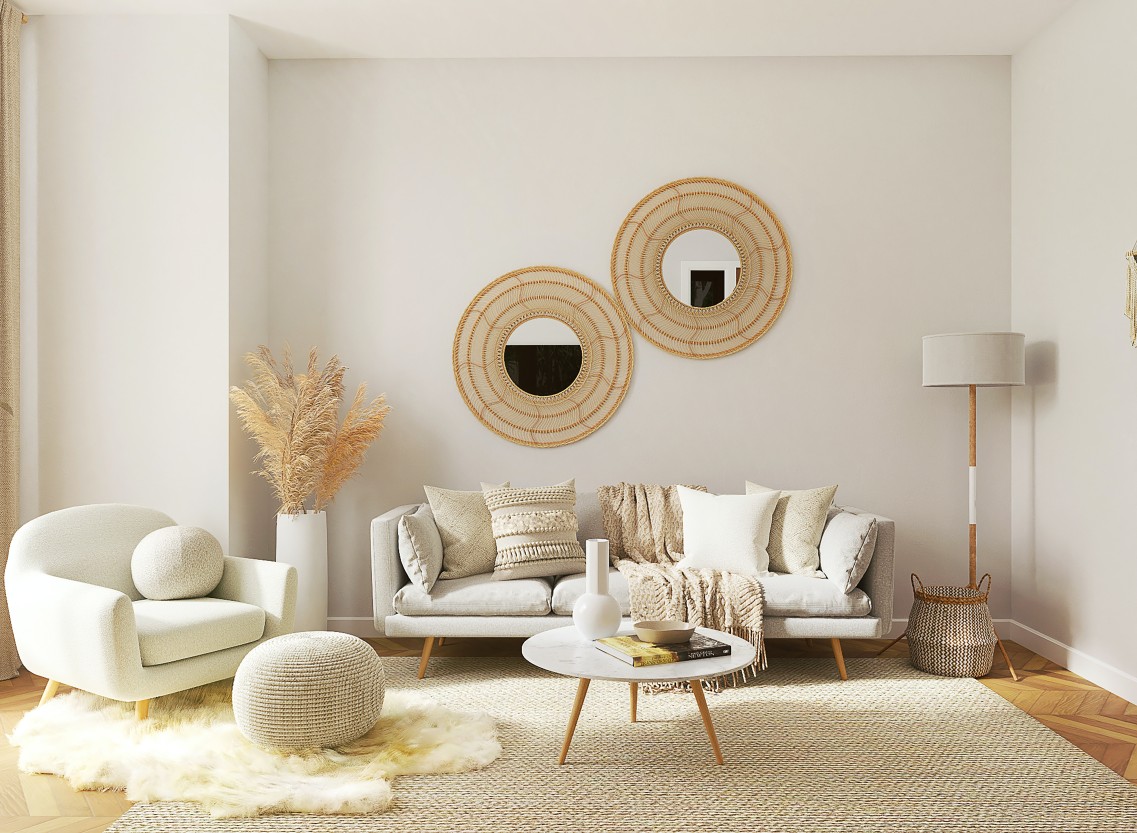
Less Is More
The principle of minimalism hinges on the idea that less clutter means more room to breathe. In a small living space, this concept is crucial. Furniture with simple designs and clean lines can make a room feel larger and more open. By selecting pieces that are both functional and stylish, you create an environment that feels uncluttered.
Consider a sleek sofa paired with a glass coffee table. These items serve their purpose without overwhelming the space. The absence of excess decor allows each piece to stand out, making your living area feel spacious and inviting.
Cozy Atmosphere
Minimalism also plays into creating a cozy atmosphere in small living rooms. It’s not just about having fewer items; it’s about choosing the right ones to foster warmth and comfort. Soft textures and warm colors can complement minimalist furniture by adding depth while maintaining simplicity.
A plush rug or throw pillows can introduce coziness without chaos. They add visual interest but don’t detract from the overall minimalist aesthetic of your space.
Mindset Shift
Embracing minimalism requires a shift in mindset—recognizing that quality trumps quantity every time. This doesn’t mean everything has to be expensive; rather, it’s about investing in well-made pieces that will last longer and ultimately save space.
It involves letting go of items we don’t need or use often enough to justify their place in our homes. Think modular shelves or multi-functional tables as smart choices for those looking to adopt this lifestyle change.
Maximizing Natural Light in Your Minimalist Living Room

Enhancing Decor
Natural light plays a crucial role in minimalist design. It highlights clean lines and simple color palettes. Bright spaces feel more open, which is key for small living rooms. To enhance the decor, place mirrors opposite windows. This reflects light around the room, making it seem larger.
Use sheer curtains or remove them completely to let in more sunlight. Choose furniture with reflective surfaces like glass or metal accents. These pieces catch light and add subtle sparkle to your space.
Increasing Intake
To maximize natural light intake, consider the layout of your furniture. Keep large items away from windows to avoid blocking sunlight. Opt for low-profile furnishings that don’t obstruct views of the outdoors.
Installing larger windows or skylights could be an option if you’re up for renovation. These changes can transform a dim room into a bright sanctuary.
Space Perception
The impact of natural light on perceived space cannot be overstated. Bright rooms appear more expansive than dark ones.
Incorporate elements that do not absorb too much light, like pale wood floors or white walls.
Choose minimal window treatments that allow maximum daylight entry while maintaining privacy when needed.
Utilizing Texture and Color in Minimalist Decor
Depth with Texture
Minimalist furniture for small living rooms can go beyond simple lines and plain surfaces. Texture plays a vital role. It adds depth to your space without clutter. Think about a wool rug, a knitted throw, or even wood grain on a coffee table.
Each texture you choose should serve a purpose. A smooth leather sofa is easy to clean and looks sleek. Textured curtains can add warmth while controlling light levels, connecting back to maximizing natural light from the previous section.
Incorporating Scandinavian Elements for Simplicity and Function
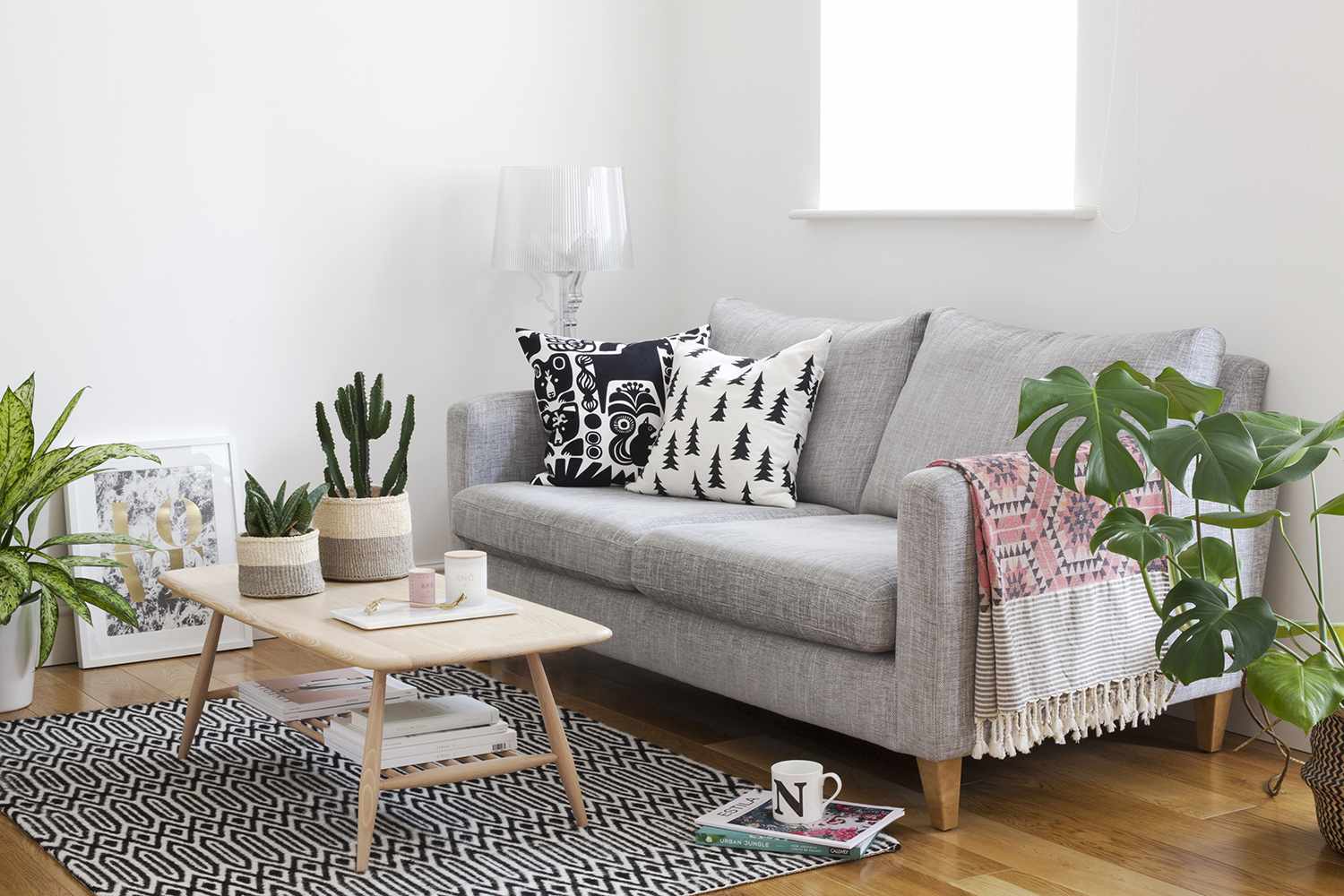
Key Characteristics
Scandinavian design is known for its clean lines and functional beauty. This style emphasizes minimalism, with a focus on what’s essential. Furniture pieces often have a sleek, modern look while being highly practical.
In Scandinavian interiors, you’ll find items made from natural materials like wood and leather. These elements bring warmth to the minimalist decor of small living rooms. The use of light colors also helps make spaces feel larger and more open.
Complementing Minimalist Decor
Scandinavian design blends well with minimalist furniture because both value simplicity. They create uncluttered spaces that are relaxing to live in. In small living rooms, every piece should have a purpose or bring joy.
The Nordic philosophy of “less is more” aligns perfectly with minimalist principles. By selecting Scandinavian-style furniture, homeowners can maximize their space without sacrificing style or comfort.
Functional Pieces
Let’s look at some functional yet simple Scandinavian furniture pieces:
- Nesting tables: Save space when not in use but expand your surface area when needed.
- Sofa beds: Serve as comfy seating during the day and transform into a bed for guests at night.
- Storage ottomans: Offer an extra seat or footrest while hiding away blankets or books inside.
These items show how multifunctional furniture can enhance small living spaces effectively.
Creating a Focal Point with Minimalist Furniture
Focal Point Basics
A focal point draws attention and sets the tone in a room. In small living rooms, it’s vital to choose one that doesn’t overwhelm the space. Minimalist furniture offers clean lines and simple forms perfect for this task.
The right piece can anchor your living space without cluttering it. Think of a sleek sofa or an elegant coffee table as potential focal points. They should be functional yet eye-catching, creating interest without excess.
Choosing Neutral Colors to Enhance Spaciousness
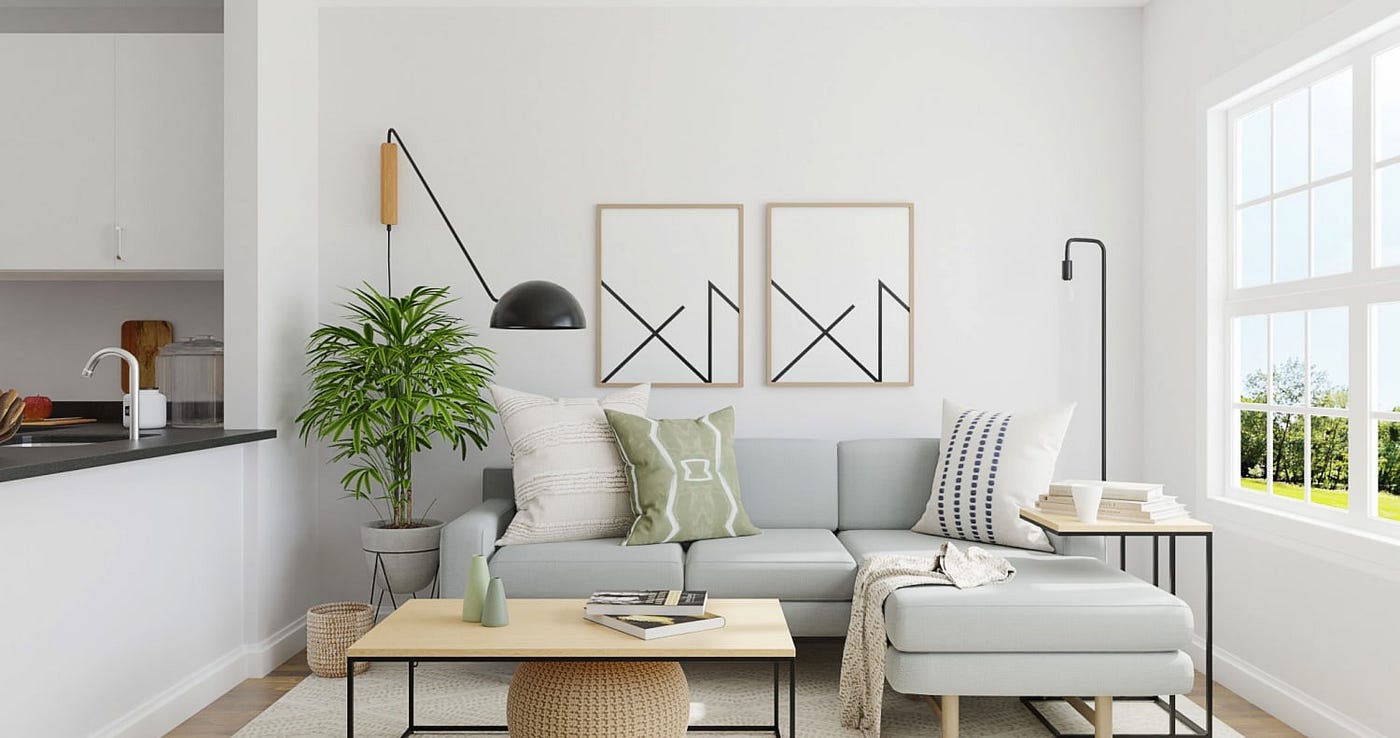
Color Impact
Neutral colors are key in making a small living room appear larger. They reflect light and create an open, airy feel. This visual trick can make walls seem further apart. Neutrals range from whites and creams to grays and beiges. They work well with minimalist furniture by not overpowering the space.
When you use neutral colors, your room feels calm and uncluttered. Think of a white sandy beach or smooth pebbles; these natural tones bring peace to a space. Lighter neutrals especially help bounce light around a room, which enhances spaciousness.
Neutral Palette
The best neutral colors for small spaces include soft whites, warm creams, subtle grays, and muted beiges. Each color has its own way of enlarging the look of your living room.
- Soft whites: Create a clean backdrop that makes everything else stand out.
- Warm creams: Offer coziness without shrinking perceived space.
- Subtle grays: Provide sophistication while keeping rooms bright.
- Muted beiges: Introduce warmth while maintaining an open feel.
Using these shades means any minimalist furniture will blend seamlessly into the design rather than crowd it.
Shade Variety
Combining different shades adds depth without cluttering visual space. You might choose light gray walls with slightly darker furniture pieces for contrast. Or pair cream curtains with white walls for subtle differentiation.
Mix textures too for added interest—think wool throws on linen sofas or silk pillows against cotton rugs. These combinations keep eyes moving through the space smoothly without feeling overwhelmed by color or pattern clashes.
Implementing Practical Storage Solutions in Compact Areas
Clutter-Free Living
Keeping a small living room neat is challenging. Storage solutions play a key role here. They help manage belongings and maintain order. Without them, clutter can quickly take over, making the space feel smaller than it already is.
In minimalist furniture design for small living areas, every item should have its place. This approach ensures that surfaces remain clear and open spaces are maximized. Consider using multi-functional furniture like ottomans with storage or couches that offer hidden compartments. These pieces provide a spot to stash items while keeping them accessible.
Innovative Solutions
Finding creative storage options can make all the difference in small living rooms where space is at a premium. Look for unique solutions that blend seamlessly with your minimalist aesthetic.
Wall-mounted shelves and floating cabinets are excellent examples of this principle in action. They use vertical space effectively without adding bulk to the room’s layout. Another smart choice might be nesting tables which can tuck away when not needed but expand to hold drinks or snacks during gatherings.
- Multi-purpose furniture:
- Sofa beds save floor space.
- Coffee tables with drawers hide remotes and magazines.
- Hidden storage:
- Decorative baskets double as catch-alls.
- Wall units incorporate shelving and cabinetry elegantly.
Balance and Minimalism
The goal of minimalism isn’t just about having fewer things; it’s also about better organization of what you do have—especially important in limited quarters like small living rooms.
Striking the right balance between storage needs and maintaining minimalism requires careful consideration of each piece of furniture’s utility versus its footprint within the room’s overall scheme:
- Choose pieces that serve multiple purposes without overwhelming the area visually.
- Avoid bulky storage units; opt instead for slimline designs that maximize interior volume while minimizing their exterior presence.
Balancing Scale and Proportion in Furniture Selection
Design Principles
Understanding scale and proportion is key to selecting furniture for small living rooms. Scale refers to how items of furniture relate to the size of the room, while proportion deals with the relationship between pieces of furniture. To create a harmonious space, both must be carefully considered.
Selecting minimalist furniture that fits your space means measuring before you buy. Imagine a large sectional sofa in a tiny room—it overwhelms the area. Instead, choose smaller sofas or loveseats that complement the room’s dimensions. A coffee table should not exceed two-thirds the length of your sofa; it ensures everything feels balanced.
Furniture Choices
When choosing minimalist furniture for small living rooms, opt for pieces designed with small spaces in mind. These might include:
- Sofas with slim profiles
- Armless chairs
- Nesting tables
Such options provide functionality without taking up too much visual or physical space.
To maintain balance and proportion, consider floating shelves instead of bulky bookcases. They offer storage without cluttering floor space—a perfect follow-up from implementing practical storage solutions discussed earlier.
Integrating Multifunctional Pieces for Versatility
Space Optimization
Multifunctional furniture can transform small living rooms. These pieces serve more than one purpose, which saves space. A sofa bed is a great example. By day, it’s seating for guests; by night, it turns into a bed. This means you don’t need an extra guest room.
Storage ottomans also optimize space. They offer a place to rest your feet and store blankets or books inside. With these items, every inch of your living room works harder.
Minimalist Design
Minimalist furniture focuses on simplicity and function. In small spaces, each piece must be both stylish and practical. Coffee tables with shelves underneath are perfect here. They provide surface area and storage without cluttering the room.
Nesting tables are another smart choice for minimalism in tight quarters. You can spread them out when needed or tuck them away neatly.
Visual Harmony
Multifunctional pieces maintain visual harmony in minimalist designs as well.
A wall-mounted desk that folds up keeps the floor clear when not in use.
This creates an open feel even in limited square footage.
Shelving units with hidden compartments keep things tidy while displaying decor beautifully.
Choosing furniture that blends seamlessly contributes to a cohesive look throughout the space.
Conclusion: Simplifying Your Space with Minimalist Furniture
You’ve got the scoop on making your small living room a minimalist haven. It’s all about cozy vibes, letting in the sunshine, and playing with textures and colors without the clutter. Think Scandi coolness meets practical magic—with furniture that doubles up on function and storage solutions that are as clever as they are invisible. Keep it light with neutral tones, and don’t forget to create that eye-catching focal point.
Now’s the time to transform your space. Roll up your sleeves and pick pieces that speak to simplicity and smarts. Remember, it’s not just about less stuff—it’s about more breathing room for your life. Ready to get started? Dive in, declutter, and design a living room that’s a breath of fresh air. You’ve got this!
Frequently Asked Questions
What is minimalist furniture for small living rooms?
Minimalist furniture features clean lines and a simple design, helping your small living room look bigger and less cluttered.
How do I embrace the minimalist style in a cozy space?
Start by decluttering, choose functional pieces with sleek designs, and stick to a neutral color palette to keep things cozy yet minimal.
Can minimalist decor really maximize natural light?
Absolutely! Minimalist spaces often use reflective surfaces and fewer curtains or blinds, allowing more sunlight to bounce around the room.
Why should I incorporate Scandinavian elements in my minimalist living room?
Scandinavian design blends beauty with practicality. It adds simplicity and function to your space without sacrificing style.
What’s the best way to create a focal point with minimalist furniture?
Select one standout piece of furniture that draws attention while maintaining simplicity. Think of an elegantly designed coffee table or sofa as your anchor piece.
How does choosing neutral colors enhance spaciousness in my living room?
Neutral colors blur boundaries between walls and furnishings, making the area feel open and airy – perfect for creating an illusion of more space!
Are multifunctional pieces recommended for small minimalist living rooms?
Definitely! Multifunctional pieces like sofa beds or storage ottomans save space while adding versatility to your compact living area.
